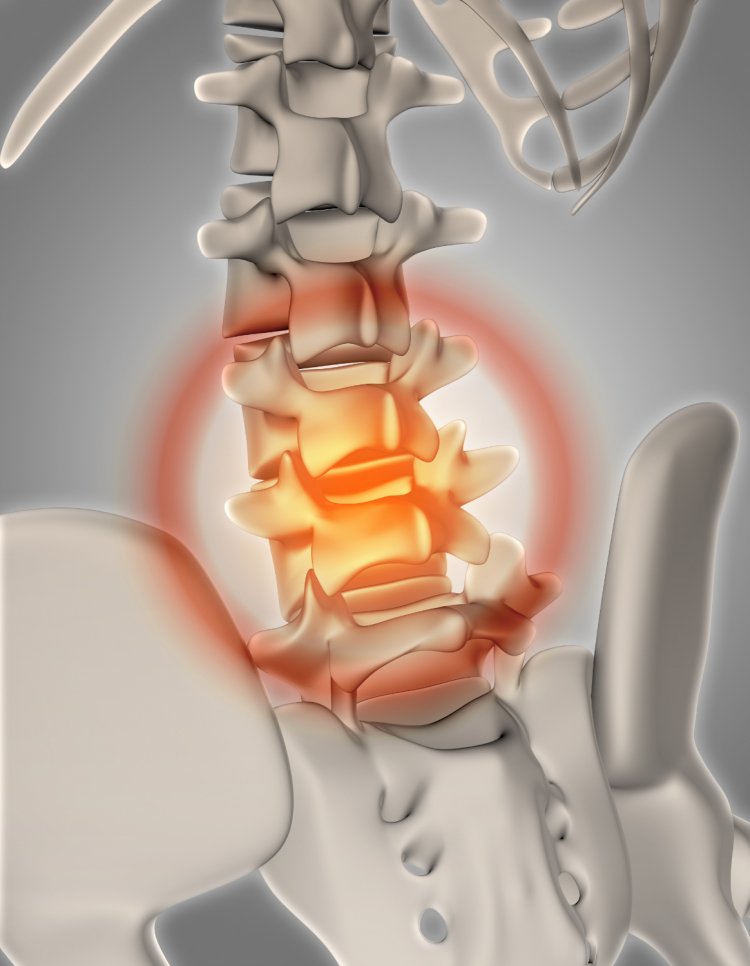Lumbar Herniated Disc: A Comprehensive Guide to Understanding, Managing, and Preventing
A lumbar herniated disc, also known as a slipped disc or herniated disc, is a common spinal condition that can cause debilitating pain and discomfort. This comprehensive guide aims to provide an in-depth exploration of lumbar herniated discs, covering everything from symptoms and diagnosis to treatment options, surgical considerations, preventive measures, and lifestyle modifications.

Understanding Lumbar Herniated Disc
Anatomy of the Spine
- Overview of the spinal column, including vertebrae, intervertebral discs, and spinal nerves.
- Explanation of the role of intervertebral discs in cushioning the spine and facilitating movement.
Pathophysiology of Lumbar Herniated Disc
- Detailed explanation of how a lumbar herniated disc develops, including disc degeneration, trauma, or repetitive stress.
- Description of the process of disc herniation, where the inner gel-like material protrudes through a tear or weakness in the outer disc layer.
Symptoms and Clinical Presentation
Common Symptoms
- Detailed overview of symptoms, including localized lower back pain, radiating pain (sciatica), numbness, tingling, and muscle weakness.
- Discussion of how symptoms can vary based on the location and severity of the herniated disc.
Clinical Assessment
- Examination techniques used by healthcare providers to assess and diagnose lumbar herniated discs, such as physical examination, neurological assessment, and imaging studies (X-rays, MRI, CT scans).
Risk Factors and Contributing Factors
Age and Degeneration
- Explanation of how aging and degenerative changes in the spine increase the risk of disc herniation.
- Discussion of age-related factors such as decreased disc hydration and loss of disc height.
Lifestyle and Occupational Factors
- Exploration of lifestyle habits (e.g., smoking, sedentary behavior) and occupational factors (e.g., heavy lifting, repetitive bending) that can contribute to disc herniation.
Diagnosis and Imaging
Diagnostic Process
- Step-by-step explanation of the diagnostic process, from patient history and physical examination to imaging studies and diagnostic tests.
- Emphasis on the importance of accurate diagnosis for appropriate treatment planning.
Imaging Modalities
- Detailed description of imaging modalities used in the diagnosis of lumbar herniated discs, including X-rays, MRI (Magnetic Resonance Imaging), and CT (Computed Tomography) scans.
- Explanation of the strengths and limitations of each imaging modality.
Treatment Options
Conservative Management
- Overview of conservative treatment options, including rest, activity modification, physical therapy, NSAIDs (Nonsteroidal Anti-Inflammatory Drugs), muscle relaxants, and epidural steroid injections.
- Discussion of the goals of conservative management, such as pain relief, inflammation reduction, and restoration of function.
Surgical Intervention
- Explanation of surgical options for lumbar herniated discs, including discectomy, laminectomy, microdiscectomy, and spinal fusion.
- Discussion of surgical indications, techniques, and potential risks and complications.
Surgical Considerations and Complications
Surgical Risks
- Comprehensive overview of potential risks and complications associated with lumbar herniated disc surgery, including infection, nerve injury, dural tear, and recurrence of symptoms.
Rehabilitation and Recovery
- Description of the rehabilitation process following lumbar herniated disc surgery, including postoperative care, physical therapy, and gradual return to activities.
Preventive Measures and Lifestyle Modifications
Lifestyle Recommendations
- Evidence-based strategies for preventing lumbar herniated discs, including maintaining a healthy weight, regular exercise, proper lifting techniques, and smoking cessation.
Ergonomic Considerations
- Guidance on ergonomic principles for optimizing spinal health, including workstation ergonomics, proper posture, and ergonomic equipment.
In conclusion, a lumbar herniated disc can significantly impact quality of life, but with early diagnosis, appropriate treatment, and preventive measures, individuals can effectively manage this condition and reduce the risk of recurrence. By understanding the anatomy, symptoms, diagnosis, treatment options, and preventive strategies outlined in this comprehensive guide, individuals can take proactive steps to protect their spinal health and overall well-being.
#UnderstandingLumbarHerniatedDisc #AnatomyoftheSpine #Pathophysiology #Symptoms #ClinicalAssessment #RiskFactors #ContributingFactors #Diagnosis #Imaging #TreatmentOptions #ConservativeManagement #SurgicalIntervention #SurgicalConsiderations #Complications #Rehabilitation #PreventiveMeasures #LifestyleModifications #ErgonomicConsiderations
Disclaimer:
The information provided in this article is for educational purposes only and should not be considered medical advice. If you have any health concerns or are experiencing symptoms, it is important to consult with a healthcare professional, such as a doctor or clinic, for proper diagnosis and treatment. Always seek the advice of your doctor or other qualified health provider with any questions you may have regarding a medical condition. Do not disregard professional medical advice or delay in seeking it because of something you have read in this article.
What's Your Reaction?





















